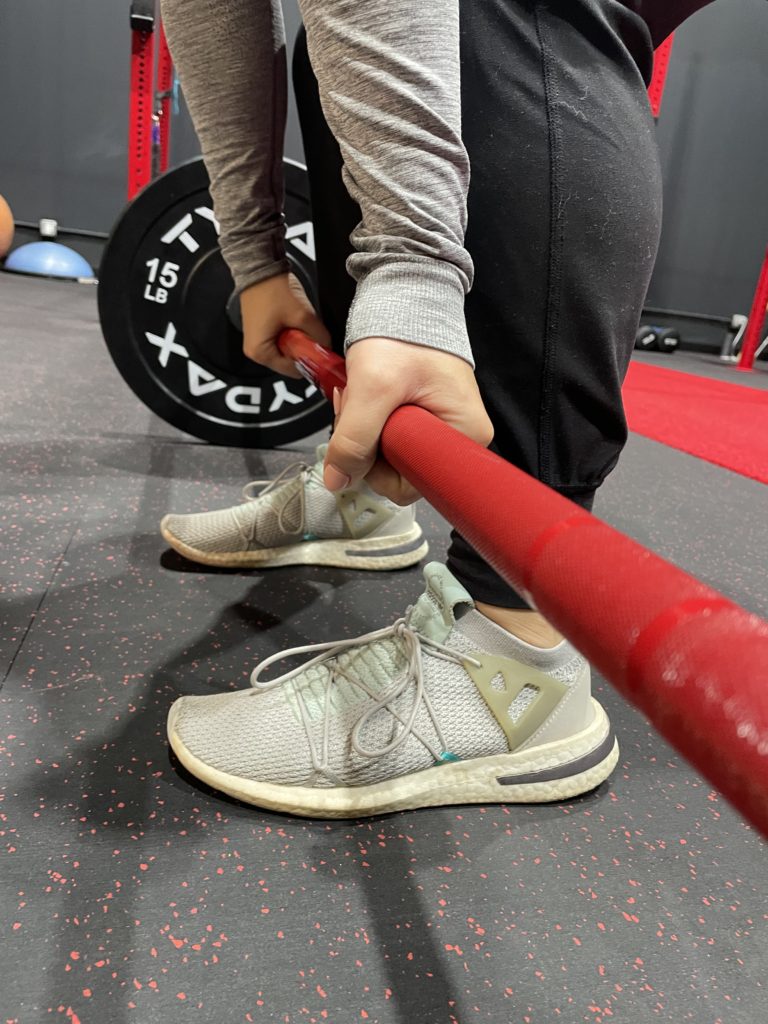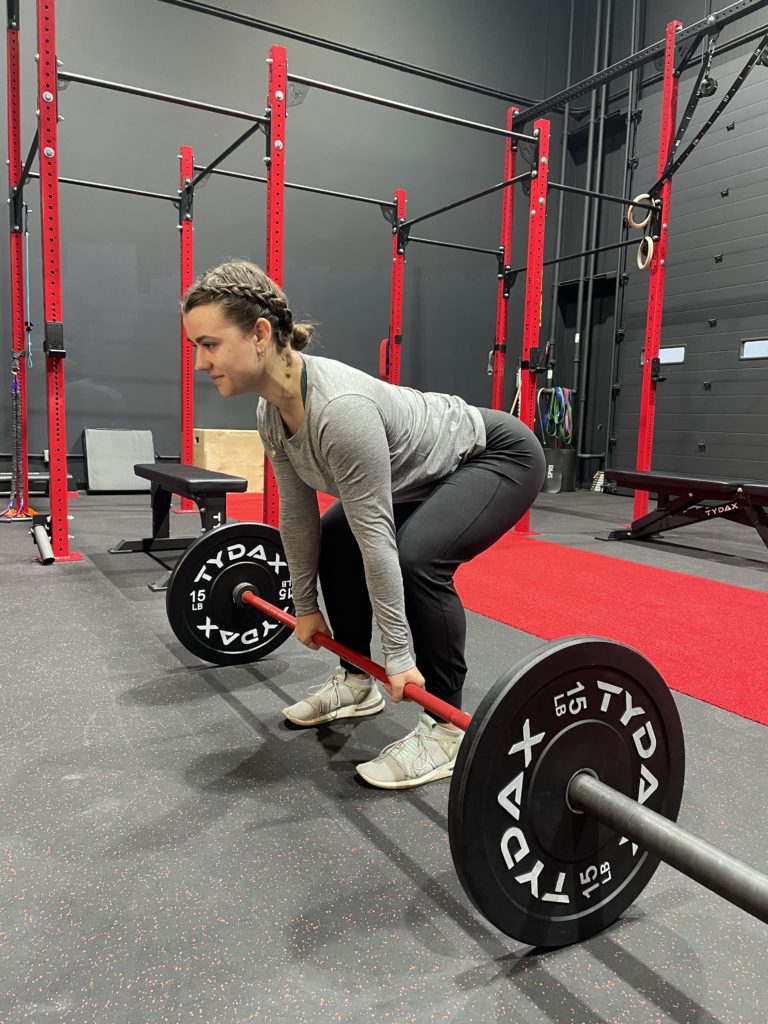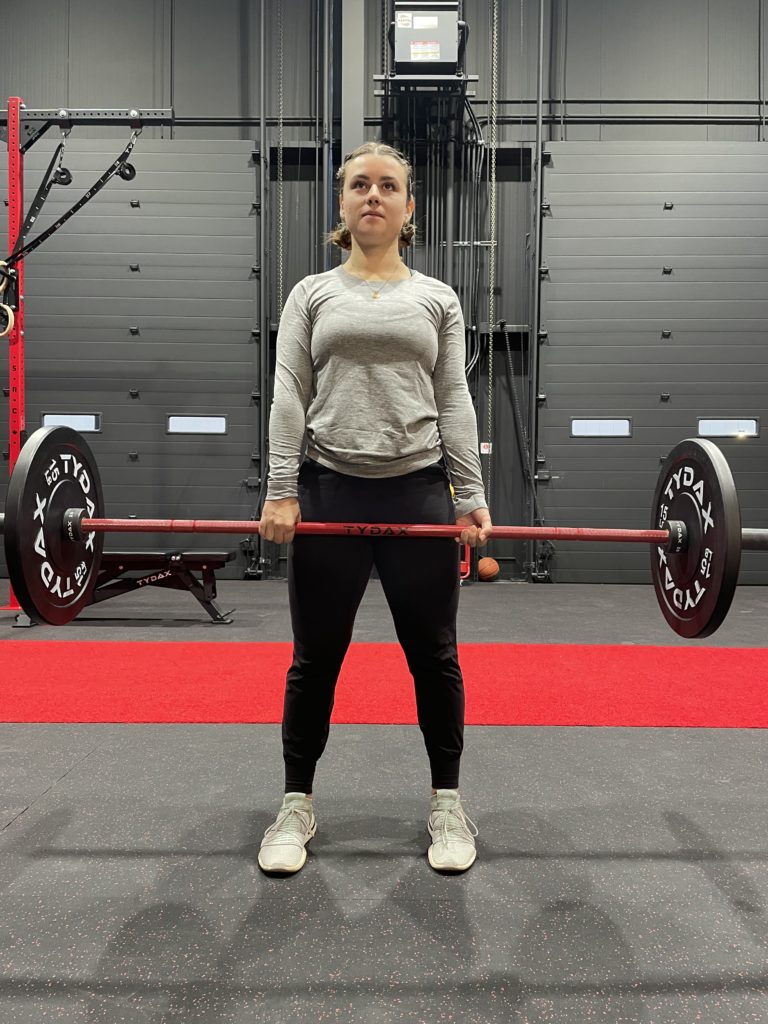Breaking Down the Deadlift
In general, the goal of weightlifting is to set the body in a strong position and then maintain that position while moving the weight. This concept comes into practice when doing a deadlift. Deadlifting can feel scary due to old misconceptions and poor training methodology. By breaking down the actual movement and learning how to set ourselves up in a strong position this can be a go-to exercise for many. Here we’ll focus on three components of the deadlift that are essential to the movement.
BAR POSITIONING:
It is important to set the bar up close to one’s body so you can get a direct vertical pull of the weight. The bar should line up with one’s midfoot and be close to your shins. When hinging over to grip the bar, there should be a vertical line from one’s shoulders to the grip on the bar. This set-up creates the most efficient path for the bar to move upward.

Body Engagement:
Creating the correct engagement throughout our body before lifting the
weight allows for protection from injury and ensures we are prepping the body to be in a strong position. Once aligned with the correct bar positioning, hinge at the hips and grip the bar. First, engage the lats; one can do this by “closing their armpits” and maintaining a proud chest. Next, brace through your core, creating the sensation of wearing a corset or weightlifting belt. The core should feel tight and solid. Lastly, when driving off the floor focus on pushing the feet into the ground and pulling the hips to the front of the room. At the top of the lift one’s glutes, core and back stood be engaged before moving hips backwards and lowering the weight to the floor, or dropping it.

Body Movement:
It is essential that a deadlift stems from movement of the hips rather than a pulling through the back. Often people view this movement as an up down motion when in reality it should be a forward to backwards movement. Focusing on the path of one’s hips, during the hinge motion, the hips should move to the back of the room. Then, as the body comes back to standing the hips should push through to the front of the room. This forward and back movement ensures that one is hinging from the hips and using the glutes rather than placing excessive strain on the back.

Modify your deadlift:
- Rack Pull Deadlift: elevates the distance in which the body needs to hinge, instead of resting the bar on the floor find a comfort rack positioning and pull the weight from that
distance. - Sumo Deadlift: A wider stance through the legs allows one to get closer to the bar, approach with a lower hip positioning and engaging more through the glutes.
- Single Leg Deadlift: Allows for a bilateral focus and balance.
Strengthening our body in this movement supports us in our daily life tasks and is crucial for longevity. Next time you are in the gym, think about adding some deadlifts into your routine!